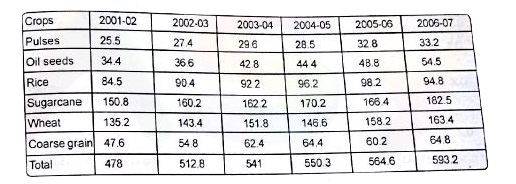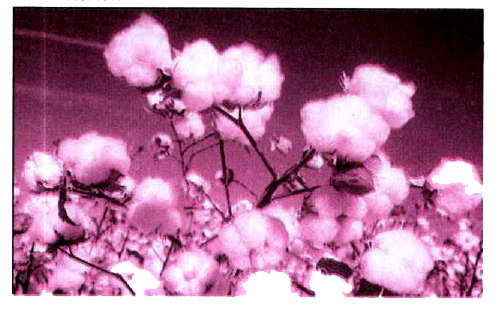Read the source given below and answer the questions that follows: In rural areas, the main demand for credit is for crop production. Crop production involves considerable costs on seeds, fertilizers, pesticides, water, electricity, repair of equipment, etc. There is a minimum stretch of three to four months between the time when the farmers buy these inputs and when they sell the crop. Farmers usually take crop loans at the beginning of the season and repay the loan after harvest. Repayment of the loan is crucially dependent on the income from farming. In another situation, because of the crop failure, credit pushes the person into a debt trap.
When do generally farmers take a crop loan?
at the end of the season
at the time of selling their crops
at the beginning of the season
at the time of harvesting
The correct Answer is:C
at the beginning of the season
Similar Questions
Knowledge Check
Read the source given below and answer the questions that follows: In rural areas, the main demand for credit is for crop production. Crop production involves considerable costs on seeds, fertilizers, pesticides, water, electricity, repair of equipment, etc. There is a minimum stretch of three to four months between the time when the farmers buy these inputs and when they sell the crop. Farmers usually take crop loans at the beginning of the season and repay the loan after harvest. Repayment of the loan is crucially dependent on the income from farming. In another situation, because of the crop failure, credit pushes the person into a debt trap.
What happens in case of crop failure?Afarmer can take one more loanBfarmer goes into a debtCfarmer loses his propertyDnone of the aboveRead the source given below and answer the questions that follows: In rural areas, the main demand for credit is for crop production. Crop production involves considerable costs on seeds, fertilizers, pesticides, water, electricity, repair of equipment, etc. There is a minimum stretch of three to four months between the time when the farmers buy these inputs and when they sell the crop. Farmers usually take crop loans at the beginning of the season and repay the loan after harvest. Repayment of the loan is crucially dependent on the income from farming. In another situation, because of the crop failure, credit pushes the person into a debt trap.
According to this paragraph, what is the main demand of credit in rural areas?Aproperty owned by the borroweralBcrop productionCblank chequeDloan cardRead the source given below and answer the questions that follows: In rural areas, the main demand for credit is for crop production. Crop production involves considerable costs on seeds, fertilizers, pesticides, water, electricity, repair of equipment, etc. There is a minimum stretch of three to four months between the time when the farmers buy these inputs and when they sell the crop. Farmers usually take crop loans at the beginning of the season and repay the loan after harvest. Repayment of the loan is crucially dependent on the income from farming. In another situation, because of the crop failure, credit pushes the person into a debt trap.
On what factor the repayment of the loan depends?Afarmer's propertyBfarmer's credit limitCsize of his farmDincome from farming
What are the different practices that are involved in crop production management?
View SolutionDescribe the role of the farmers after the crops are harvested and production is complete?
View SolutionStudy the table graph carefully to answer the questions that follows
Production of main crops in India (in million tonnes)

What was the average production of rice in the given years?
View SolutionWhich of the following Bt crops is being grown in India by the farmers ?
View SolutionStudy the table graph carefully to answer the questions that follows
Production of main crops in India (in million tonnes)

Production of what type of crops was going to increase in each year in the given years?
View Solution

